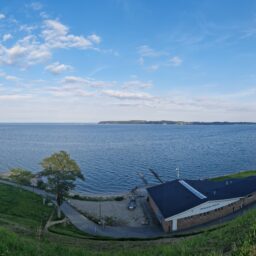Cycling around Denmark’s Jutland Peninsula
“It’s summer. Holidays. What are you going to do with your free time?” The answer to this question was quite easy: cycling! I’m still pursuing my long-term goal to cycle the North Sea cycle route R1, which is basically a 7000 km long route around the North Sea. I’ve already covered most parts of the German leg (Ostfriesland and Nordfriesland) in the years 2018 and 2019 but as we all know, COVID-19 happened in early 2020 and all travelling plans had to be cancelled and postponed.
Four years later, it was about time to continue the journey. My plan was to cycle Denmark by bike and tent. I’ve never been to Denmark before and I had no idea what to expect there. The concept of Nature Camping Sites and Shelters was very intriguing and I wanted to give it a try. Prepared a route with OpenCycleMap, packed my stuff and off I went to the island of Sylt where I ended my last bike tour in the summer of 2019.
Getting to Sylt by train…
Travelling to Sylt by train on weekend wasn’t the best idea. The route from Hamburg to Sylt was overwhelmed by tourists. The trains were mostly full, delayed and there was little to none space for cyclists. I had to skip a change in Elmshorn just because the train was hopelessly full and people were travelling like canned fish. After arriving in Sylt on the late afternoon, I had to discard my plans for the first day. I tried to find a camping site near the city of Kampen. I entered a camping site in Wenningstedt, set up my tent and after half an hour or so, I was approached by the security guy. He told me that the camping site was “full” and that I had to leave. So basically I was thrown out because I arrived too late and didn’t book my stay. I’ve never experienced this before, packed my stuff and left speechless. Since wild/stealth camping in Sylt is illegal and there is always a beach police, I was forced to sleep on a bench. This unintended situation gave me a huge pain in my back so I had to use painkillers for the next couple of days. I really disliked Sylt (even back in 2019) and just wanted to leave as quickly as possible. I won’t visit this island anymore. It’s just overcrowded, expensive (FCK KURTAXE) and you get treated like an animal. No thanks.
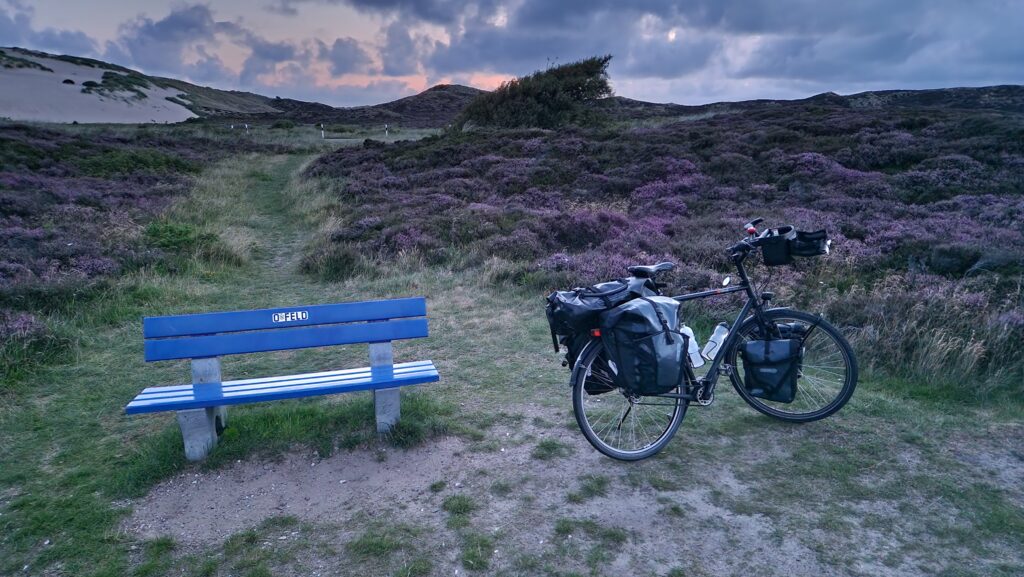
However, the next morning (Day 1), I cycled to the so-called Ellenbogen (“Sylt elbow”) and visited the List lighthouses and the northernmost location of Germany. The sunrise was really beautiful and rewarding. I cycled back to the List harbor and took the ferry to Havneby (Rømø, Denmark) at around 08:30. After leaving the island Rømø at around 10 o’clock, I started cycling the Route R1 on Jutland.
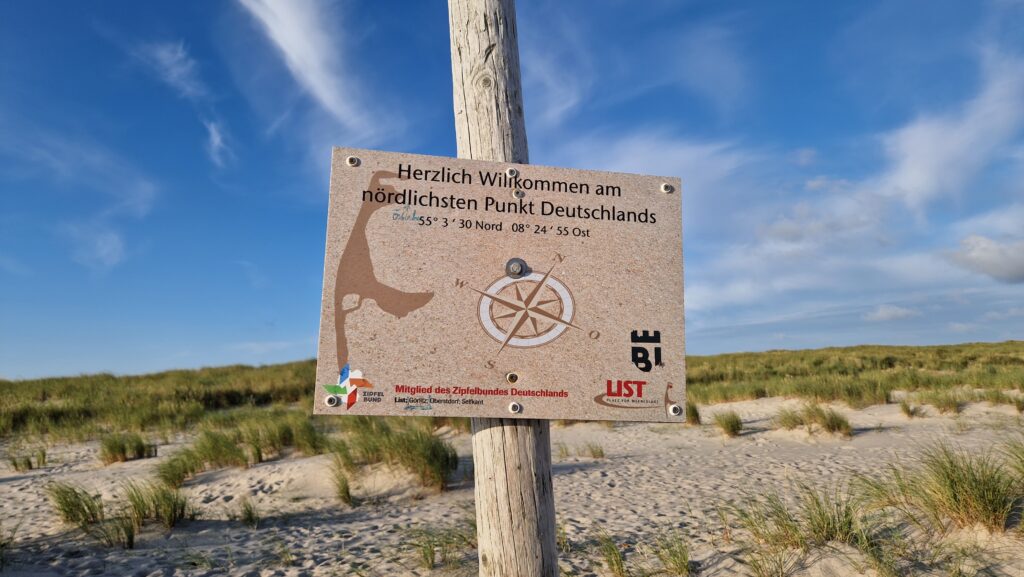
Week 1 – West Coast Route R1 from Sylt/Rømø to Skagen
This route was (officially) about 550 km long and it took me 7 days from Havneby to the northernmost location in Denmark. The west coast route was beautiful. Besides beautiful landscapes (dunes, forests, fjords, bays, sea) and mostly good to excellent cycling weather, the cycling roads were in a very good condition and also varying in quality: asphalt roads, gravel, sand/beach, forest paths, hills. I had little to no trouble with winds because the cycling routes were guarded by wind-stopping forests, dunes or dikes. 50% of the cycling time I had a weak wind, 25% back wind and 25% head wind. Day 3 was very rainy, the rain lasted for several hours but was gone in the afternoon. The route signs on the route were mostly visible, at some points they were either hidden, missing or inconclusive. This resulted in many extra kilometers because I lost track of the route. In the end, I cycled around 620 km.
Camping sites were in a good to very good condition although a bit expensive in the range from 160 to 230 DKK per night which corresponds to 23 to 32 EUR per night. It’s a bit much for cyclists with a tent if you compare it to Germany (price range from 12 EUR to 20 EUR per night). However, the shelters were free of charge so spending every second or third day on a camping site in order to get a shower and to charge up batteries was sufficient. Unfortunately, someone stole my fast charger and power bank during my stay in Ribe on Day 1. Luckily I carried a backup power bank and a charger – albeit much slower to charge – so I had to turn on the flight mode and save energy for the rest of the tour.
I met many other cyclists on route and it was an amazing experience. Everybody was friendly and supportive and we shared our cycling plans and stories. Two of those amazing cyclists were Tim from UK and Justin from Switzerland. We met on Day 3 (the rainy day) like two times on the road and later in the evening (by coincidence) in a shelter. We talked about our routes and we jokingly agreed “Our next shelter will be at X, so if you join us, it would be great to have you with us!”. The shelters were 80-100 km apart so it was quite a challenge to get there. So I cycled the next couple of days for 8 hours daily and I was able to meet them at the shelters we agreed upon. As I showed up, they couldn’t believe that I made it! Tim was very excited and sponsored me a beer on each evening. Unforgettable! We parted our ways after Day 6. Tim went on his tour to Norway and Justin continued his journey in Sweden.
Cycling from Hirtshals to Skagen was really amazing. I had about 3 hours of back wind, very good weather and great views. I took some pictures of the area although I didn’t take a walk to the Northern Beach. There were too many tourists present and I was afraid leaving my bike unattended. I noticed a high number of Tesla Electric Cars there but one car really blew my mind: I spotted a DMC DeLorean there (the car from the movie Back To The Future) which really blew my mind.
Week 2 – East Coast Route R1/R5 from Skagen to Kruså/Flensburg
After reaching Skagen and the northernmost point of Denmark, I had to cycle back to Germany – a distance of approx. 620 km. Day 8 (Hulsig – Dokkedal) was a very good cycling day (111 km) with lots of interesting encounters. The following days (Day 9 and 10) were really difficult weather-wise. A bad weather zone called Hans was raging over Scandinavian countries and brought a lot of rain. The situation in Sweden and Norway was very dangerous because some local rainfalls were extreme and flushed away streets and railways. Day 9 (Dokkedal – Fjellerup) was raining the whole day. I was wet both inside and out. This was no problem because I had exchange clothes which stayed dry during the ride. Staying warm and dry during the night is much more important than during the daytime. On Day 10, the rain went away but there were strong winds at 60 km/h in combination with hills. This combination of winds and hills was very tiring and I wasn’t able to cycle large distances (55 to 65 km per day at best). Hans was almost gone on Day 11 (Balle – Aarhus) but I had to fight the terrain: hills after hills. While the West Coast Route was mostly flat and hills were an exception, the East Coast Route was dominated by hills. The hills weren’t very large (maybe 10 to 30 meters) but very frequent. I had to push my bike frequently because of my overweight and because I was carrying too much baggage with me. Nevertheless, I was able to achieve daily distances of somewhat 70 to 90 km per day which were inside of my comfort zone.
The landscape along the east coast route was dominated by cities with harbors, bays, smaller villages and agriculture. On sunny days, the landscapes were beautiful and very varied. The hills were quite a challenge which were a very nice addition to the overall cycling experience. During the last day of cycling from Fredericia to Kruså (Day 14), I was able to cycle another 109 km although the weather got really bad in the afternoon. I visited a camping site in Kruså which was about 10 km away from my destination: Flensburg.
The next day, I cycled across the Danish/German border to Flensburg, bought myself a Flensburger Pilsner beer and celebrated a successful bike tour. The travel back from Flensburg to Braunschweig by train took me another 7.5 hours.
Summary
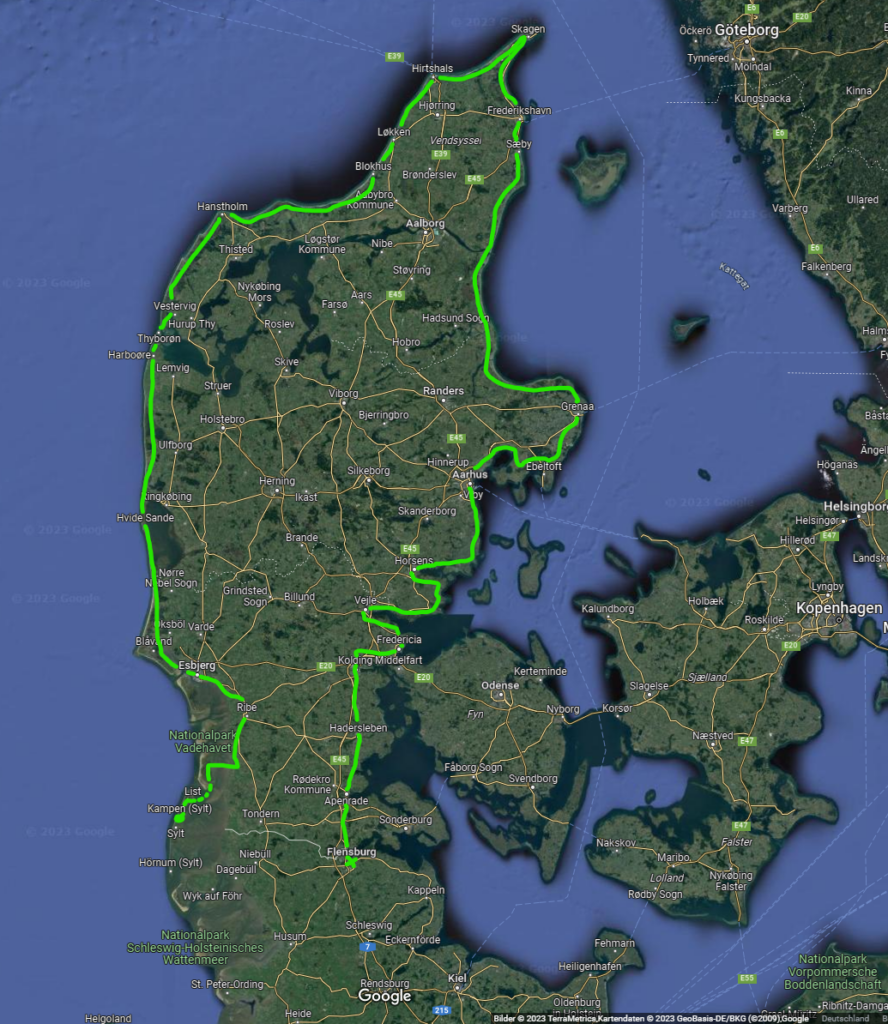
I really enjoyed this adventure. My arrival day from Braunschweig to Sylt wasn’t going as planned. I had to sleep on a bench because I was thrown out from a camping site. My charger/power bank was stolen. My back/ass hurt all the time. I got lost many times and had to ride extra kilometers. I had to push my cycle and walk uphill many times… Nevertheless, a 40 year old guy weighing 120 kg (240 lbs) doing a 14 day cycling tour in a foreign country worked out pretty well! I’ve visited beautiful and interesting places and cities (Esbjerg, Hvide Sande, Hanstholm, Blokhus, Hirtshals, Skagen, Fredrikshavn, Fjellerup, Grenå, Aarhus, Juelsminde, Fredericia, Kolding, Hadersleben, Aabenraa), yet I haven’t seen them all. The holidays in Denmark were quite affordable (~500 EUR for 14 days including food and camping and 2 extra days of arrival and departure). I plan to return to Denmark maybe next year and cycle the remaining part from Fredericia via Odense to Kopenhagen.
| Total kilometers cycled (km) |
Total time cycled (hh:mm:ss) |
Average speed (km/h) |
Average cycling duration per day (hh:mm:ss) |
| 1244.96 | 98:15:26 | 12.646 | 6:33:02 |
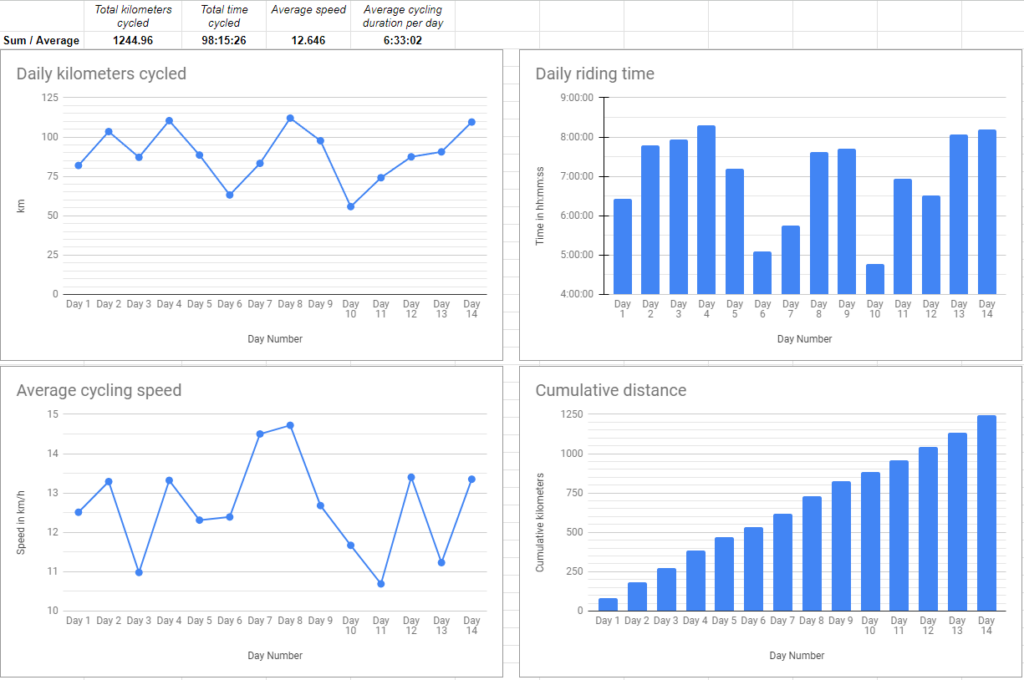
Cycling around Denmark’s Jutland Peninsula Read More »











